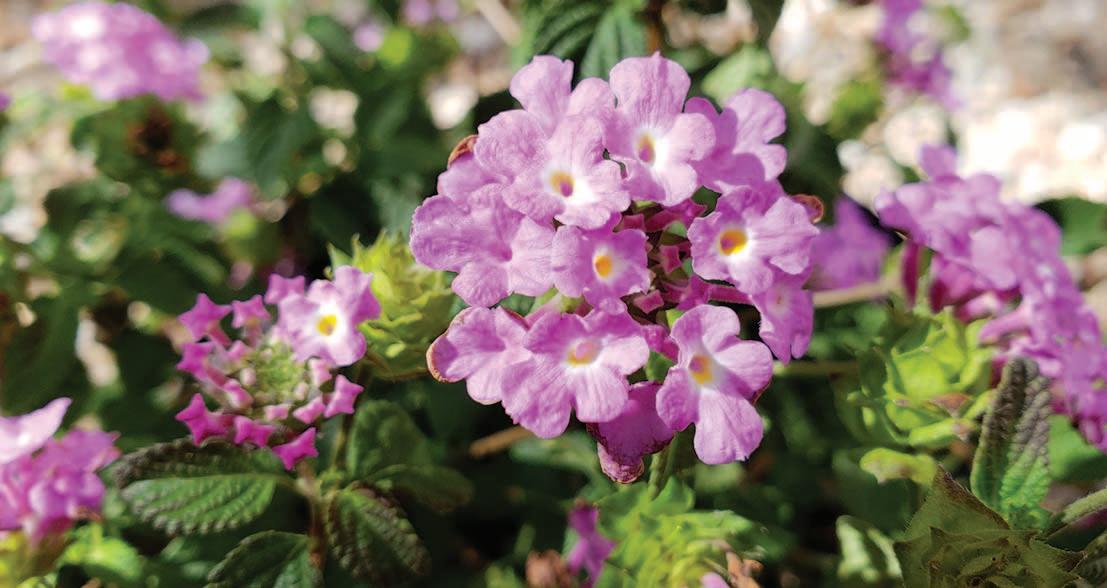GROWING VEGETABLES AND HERBS IN THE LOW DESERT Wendy Whitman Desert Mountain HOA Landscape Committee Member and Desperado
Many of us have turned to gardening (or more gardening) during recent times. Gardening is a way to reduce stress and can save a trip to the store or ordering more items than you need for grocery pick up. With not much effort, you can have a few of your grocery staples readily available most of the year. Fresh herbs, expensive in the store, are easy to grow and many are available all year long with water and some soil nutrients. Below are a few guidelines for edible gardening in the low desert. You don’t need a lot of space – Raised beds are great, they come in many sizes and are easy to assemble, and you add the soil you like. Or you can construct a more permanent concrete and stucco raised bed. Another option is to tuck herbs and vegetables in between your existing plants inside your patio walls. Your patio plants can provide some afternoon shade in summer. Many herbs and vegetables do well in containers. Place them on a wheeled plant dolly so you can move them around for more sun or shade. If you choose to put your garden directly in the desert soil, you should create basins to hold water. Location and irrigation – Any edible garden should be kept inside your patio walls due to our native desert landscape restrictions and the hungry javelinas. If you apply chemicals or pesticides, you will need to find a location away from that. Find a spot with morning sun and filtered afternoon sun. Use irrigation for consistency and ease. Keep plants moist. In summer, pots may need water more than once per day. You can run a drip or a soaker ¼ inch line from your irrigation to the pots and adjust the irrigation timer. In winter and when there are the
12 | Desert Mountain Connection
ample rains, I shut off the irrigation for the in ground vegetables. When watering, soak the soil until water drains from the container’s bottom, wetting the entire soil mass and leaching out salts. Our city water is very hard. Consider collecting rainwater for enhancing watering needs. There are books and local organizations that have information available for our area. Soil, mulch and fertilizer – If you have a raised bed, use your favorite outdoor soil mix and mix it in the top inch or two of your desert soil to ease the transition between nutrient rich soil and desert soil. If you are mixing edibles with your landscape plants, mix compost into the top inch or two of the soil. Top with mulch to about 3 inches or as much as possible to hold in moisture and reapply once per year. Fertilize as directed with your favorite fertilizer. I have better luck with an organic liquid fish fertilizer.
What to Grow and When First, find your AZ US Hardiness Zone (plantmaps.com /interactivearizonausdaplantzonehardiness map.php). I estimate mine to be 9b. Elevation varies here in Desert Mountain so best to check online for yours. The most optimal time to plant is fall or spring. However, there is something to plant almost every month of the year including Monsoon summer in July. The University of Arizona extension service (extension. arizona.edu/homegardening) and Native Seed Search (nativeseeds.org/pages/gardening) both publish calendars that will tell you what, when and if you should plant seeds or transplants. I like to plant sunflowers from seed all summer. They love the heat and add wonderful color during the hot summer months.












